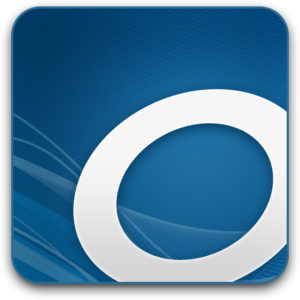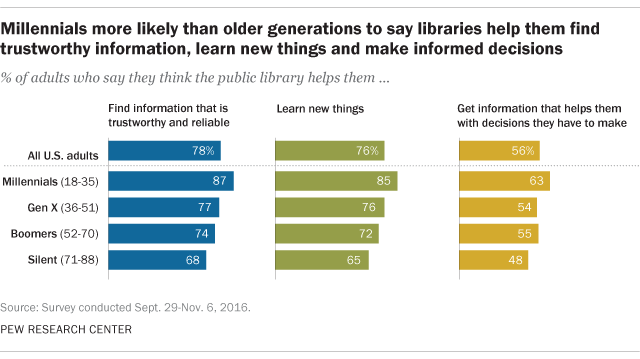It’s possible for indie authors to go beyond thinking of selling our books just at online retailers. Libraries are another potential channel for book sales and another stream of income! Eric Simmons shares how he’s gotten his books into some of the largest libraries in the US.
 In December 2017, as I was thinking about my 2018 business goals for my self-published Memoir, Not Far From The Tree, which was the first book I had ever written, I knew I wanted to establish near irrefutable credibility around the book with potential purchasers.
In December 2017, as I was thinking about my 2018 business goals for my self-published Memoir, Not Far From The Tree, which was the first book I had ever written, I knew I wanted to establish near irrefutable credibility around the book with potential purchasers.
Ultimately, I decided to focus on libraries as a strategic market segment due in large part to the trustworthiness people tend to associate with these facilities, and because they have what’s called a “Collection Development Policy.”
Per the New Orleans Public Library, which is now one of my customers:
“The Collection Development Policy is designed to support the Library’s Mission statement and serves as a guide for the selection, acquisition, maintenance, and retention of materials.”
Having a book in a library helps establish credibility with readers, in my view, because the book has been vetted and passed a litmus test, so to speak, to be considered for purchase and placement within the library.
Also, libraries are highly referenceable customers, especially with other libraries. If you can get one library to buy your book, the odds are likely others will follow. I call this the domino effect, and it has been working for me.
To illustrate, after initiating my “Library Campaign” in January 2018, sixty-eight (68) libraries (21 Academic, 46 Public, and 1 Library Services company) have purchased my now two books (see, https://www.esetomes.com/library-customers). Of these, five are amongst the twenty-five largest Public Libraries in the U.S. and one is in the top twenty largest Academic Libraries.
Each time a new library purchases one of my books, I add them to my “Reference List,” and I share the list with prospective libraries during my marketing campaigns. One clear benefit I am beginning to see from my Reference List usage is a shorter time to sales closure, particularly with Public libraries, which for me is down from six months to three months on average. Lately, however, I’ve been seeing Public libraries purchase within a month!
The Library Market
Per data on the Online Computer Library Center’s (OCLC) website under, “Global Library Statistics,” there are 336,841 libraries worldwide (45,028 Academic and 291,813 Public). In the U.S., the site lists 3,793 Academic and 9,042 Public libraries.
Per the American Library Association (ALA), the total number of libraries in the U.S. is 116,867, the preponderance of which are Public and Private school libraries.
Note, the OCLC’s number for Public Libraries in the U.S. doesn’t include the total number of buildings which ALA lists as 16,568. I use this number for my Public library opportunity.
If you are targeting millennials for your books, they are more likely than older generations to say libraries help them find trustworthy information, learn new things, and make informed decisions, per a 2016 Pew Research Center survey.
On February 22, 2017, Reedsy published an article which stated, ” … 92% of librarians surveyed between May 2016 – July 2016 by New Shelves stated that they regularly buy books from self-published authors and small presses. The article goes on to say, “Once one library has your book and the check-out rates start showing up on reports, other librarians will start ordering your book. The growth and spread of your book’s sales and popularity will start happening while you are not even looking!”
The Challenge
You will find some Librarians still rely heavily on book reviews. As evidence, one Librarian sent me the following in an email last year, “New library materials are considered for purchase using a variety of selection criteria including favorable reviews in standard library review media (Library Journal, Kirkus, Booklist) anticipated demand for the material, local interest, and space and budgetary considerations.”
 Personally, I struggle mightily with book reviews. Here’s why. Per Kirkus’ website, the charge for a “Traditional Review” is $425 U.S. and you can expect a 250-300 word review back in 7-9 weeks. If you want the review expedited, the cost is $575.
Personally, I struggle mightily with book reviews. Here’s why. Per Kirkus’ website, the charge for a “Traditional Review” is $425 U.S. and you can expect a 250-300 word review back in 7-9 weeks. If you want the review expedited, the cost is $575.
A second option is an “Expanded Review” that can be received in 7-9 weeks at the cost of $575, and the expedited cost is $725. At a royalty rate of let’s say, $3.00 U.S. for a paperback book, one would have to sell roughly 142 books to break even on the “Traditional Review.” That’s like giving 142 libraries a book for free!
At this juncture, I prefer not to pay to play to get into libraries. Thanks, but no thanks!! I do realize however my stubbornness could be costing me revenue. Let’s assume a Kirkus “Traditional Review” yielded me, 1,000 new library customers. Using the previous $3.00 royalty rate, I might be missing out on a net revenue gain of $2,575 ($3,000-$425). Due to my current marketing budget, however, I’m staying pat for now on paying for a book review.
Getting Started Marketing to Libraries
If like me, you’ve discounted paying for book reviews, for now at least, as a means for getting your book into libraries, you’ll have to roll up your sleeves and contact libraries directly. To get started, you’ll need to get answers to two key questions.
- Who are the primary decision-makers in the libraries you’ll be contacting; and
- Where do these libraries go to purchase their books?
1. Key Decision Makers in a Library
Depending on the size of a library, the key decision-makers will have titles such as Head Librarian, Director, or in the case of Academic libraries, perhaps Dean. Other vital titles are Collection Development Librarian or Acquisitions Librarian.
 If it’s a large library, don’t be surprised if the Collection Development Librarian has the latitude to make the final decision on a book purchase. This individual carries a lot of weight, and often the Head Librarian will refer you to the Collections Development Librarian.
If it’s a large library, don’t be surprised if the Collection Development Librarian has the latitude to make the final decision on a book purchase. This individual carries a lot of weight, and often the Head Librarian will refer you to the Collections Development Librarian.
You should also look for potential influencers in a library. If an individual has responsibility for say, children’s books, and you’ve written one, that person needs to be on your contact list. So, genre responsibility is essential as well.
Do sell top-down, i.e., to the highest titled person in the library. The rationale here is the “boss” can override a subordinate’s decision – if you catch my drift. For most of my libraries, I try to have at least two contacts, and for some, I have as many as six because individual Librarians may decide to make a personal purchase.
2. Where Do Libraries Go to Purchase Their Books?
Baker & Taylor (B&T) seems to be the preferred vendor of many Librarians, but in my case, most of my library customers have purchased the paperback version of my memoir from IngramSpark. I anticipate my B&T sales will begin to pick up dramatically now that a snafu has been corrected following the absorption of CreateSpace by Kindle Direct Publishing (KDP).
To make a long story short, B&T dropped my book by mistake when the absorption above occurred and to complicate matters KDP was not doing business with B&T at the time, and may still not be as of this writing. Note, although Ingram distributes through B&T, Ingram states on its website, “Since B&T targets libraries they may decide to not to carry a specific title– regardless of the printer or publisher–if they feel it won’t generate interest from their target audience. We cannot *make* B&T carry a title. It is completely at the discretion of B&T.”
Note: If B&T doesn’t pick up your self-published title through Ingram, you may want to reach out to B&T directly, or you may have to get a library to request your book.
To date, my paperback library sales through Amazon’s Expanded Distribution offering and Brodart, another company you may hear Librarians mention, have been minimal.
 As for eBooks, I’ve had sales to the Los Angeles Public Library (the U.S.’ 5th largest Public Library) and others through OverDrive, a service that allows customers to borrow digital content for free.
As for eBooks, I’ve had sales to the Los Angeles Public Library (the U.S.’ 5th largest Public Library) and others through OverDrive, a service that allows customers to borrow digital content for free.
My Overdrive sales have come through Draft2Digital (D2D), Smashwords, and StreetLib. Last year, D2D began working with Bibliotheca, a library management solutions company, and unlike with Overdrive, you can get a royalty payment when your eBook is checked out.
D2D calls this option Cost Per Checkout (CPC) which they describe as “CPC allows libraries to have access to the same title for more than one user. Instead of a fixed price, libraries gain access to your books and pay 1/10 of the book’s full purchase price, each time it is loaned out.” I’ve received several small royalty payments under this option and wish something similar was available when OverDrive related book checkouts occur.
Building Your Library Contact Database
I built my Library Contact Database with Microsoft Excel. This souped-up spreadsheet is sortable and now contains 2,187 libraries with 2,046 Academic library contacts and 1,069 Public library contacts which equates to 1.4 contacts per library.
I keep separate tabs for my Academic and Public libraries because this makes it easier for me when I do a mass mailing targeted at either sector.
My field headings are Library Type (i.e., Public or Academic), Library Link (i.e., URL), First Name, Last Name, Salutation (example Mary, or Dr. Smith), Email Address, Date Contacted, Library Name, and Notes. I’m in the process of adding a State heading under which I will list the two-letter abbreviation for a State for sortability by state.
To populate my database, I perform a Google search. I’ll use the State of North Carolina as an example since this was my most recently “targeted” library State.
When I Googled, “libraries in North Carolina,” near the top of the results list appears, “Library Directory | State Library of North Carolina.” Incredibly, every Academic and Public Library in the State of North Carolina with the Head Librarian is listed, and there’s a downloadable spreadsheet to boot!
![]() Now, before you get overly excited, this is more of an exception than the norm. For most of the libraries in my database, I had to manually load each one at a rate of about 12 libraries an hour.
Now, before you get overly excited, this is more of an exception than the norm. For most of the libraries in my database, I had to manually load each one at a rate of about 12 libraries an hour.
The primary tool I’ve been using to identify Public Libraries is, LibWeb, Library Servers via WWW. You click on a particular U.S. State, and you’ll be directed to Public Libraries within the State.
Next, you click on a library’s link and you will be directed to the library’s home page. Now, you will have to search the site to identify the primary decision-maker(s). In many cases, the decision makers can be found under “About Us,” “Staff Directory” or similar. LibWeb also lists Academic libraries in the same manner.
Create a Mail Merge Document
After loading information into my database, I created a mail merge document using Microsoft Word and the “Step-by-Step Mail Merge Wizard” function. If you are unfamiliar with how to do a Word mail merge Google, “Mail merge using an Excel spreadsheet – Word – Office Support,” and Microsoft has videos that will show you how.
Through mail merge, I can customize my campaign letters so that they look tailored for the specific individual versus having a mass email look. I can insert the Librarian’s first name or title and the Library’s name in the body of the document if I like.
I learned the hard way that Microsoft has a limit, under my Office 365 subscription, of 300 emails per day. I tried to do a mailing recently of over 300, and I was locked out of my account. So, depending upon your email service, be sure to look into the daily email limits if there are any.
Which Libraries Should You Target First?
I suggest you target your local Public and Academic libraries first, especially the ones close to where you live. Many Librarians are receptive, I’ve found, to helping local authors. Also, you may get invited to speak about your book which is what happened to me with my local public library.
When’s the Best Time to Sell to Libraries?
 Libraries tend to buy year round, but by and large, I’ve found the briskest selling times to be during their Fiscal Year End/Fiscal Year Begin or FYE/FYB. It varies, but most of the libraries I’ve contacted seem to have their FYE/FYB between April and July.
Libraries tend to buy year round, but by and large, I’ve found the briskest selling times to be during their Fiscal Year End/Fiscal Year Begin or FYE/FYB. It varies, but most of the libraries I’ve contacted seem to have their FYE/FYB between April and July.
As an example, the State of North Carolina’s Fiscal Year runs from July 1 to June 30. The two months leading up to FYE, the month of FYB and the month following are good times to approach Librarians because they will be spending both remaining and new funds.
Reference Your Successes in “Library Campaigns”
In mid-April, I started a North Carolina Library Campaign, because of their upcoming FYE, which has resulted in six book sales thus far. One of which was a purchase by a Public Library System for five copies of my latest book, #HTSP – How to Self-Publish which is based on the steps I undertook to successfully, self-publish my Memoir.
I made sure to mention in my mailing my memoir was an Amazon bestseller in January and March under the Single Parent category, so be sure to tout your book’s successes in your email campaigns to Librarians.
Consider Using Multiple Email Addresses
Consider using multiple email addresses for contacting Librarians. I use three different email addresses. Why? 1) To avoid the appearance of bombarding the email recipient and 2) As a backup plan in case my email gets put in a “junk email” list.
Purchase a Library Mailing List
For this article, I did some research to see if there were library mailing lists that you could purchase and located one provided by Lists You Can Afford.
The site lists library contacts ranging from 900 to 23,000 with prices from $39 to $99. If you’re looking for a vetted list that is generating proven results for a self-publisher, I’ve decided to make my Library Contact Database available to The Creative Penn followers for $19.97. My North Carolina Library Campaign shell letter is also included to give you an idea of the type of information I provide Librarians.
My sincere thanks to each of you for your time and interest today. Hopefully, you will find the information provided beneficial. A special thanks also to Joanna Penn for being such a beacon of hope and inspiration for self-publishers worldwide!
Here’s wishing each of you the best of luck in selling to libraries. Feel free to reach out to me with questions, or if I can be of assistance, at my book website.
Have you made attempts to get your books into libraries? Please leave your thoughts below and join the conversation.
 Eric Otis Simmons is the owner of ESE, Inc., a website development firm specializing in creating sites for High School Athletes to aid them in getting recruited, Authors, Poets and others seeking to present their “Personal Brand” on the Internet. A former college athlete, Eric enjoys sports and public speaking. The first two books he’s ever written, which were self-published, have recently been added to the prestigious Collection of the New York Public Library’s Schomburg Center for Research in Black Culture.
Eric Otis Simmons is the owner of ESE, Inc., a website development firm specializing in creating sites for High School Athletes to aid them in getting recruited, Authors, Poets and others seeking to present their “Personal Brand” on the Internet. A former college athlete, Eric enjoys sports and public speaking. The first two books he’s ever written, which were self-published, have recently been added to the prestigious Collection of the New York Public Library’s Schomburg Center for Research in Black Culture.

